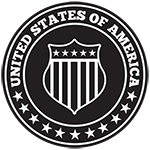Corporate compliance is the foundation of every business, ensuring operations align with established laws, regulations, and ethical standards. A robust compliance program not only helps avoid legal sanctions but also fosters a positive corporate culture and strengthens organizational resilience. As Krina Modi, an associate at Gartner + Bloom, notes, “Compliance isn’t just about avoiding penalties; it’s about building a culture of ethical decision-making embedded in the organization.”
To achieve this, corporations must focus on key areas: risk assessment, policies and procedures, training and communication, and a safe and confidential reporting system. With technological advancements, particularly in artificial intelligence (AI), these aspects of compliance are becoming more efficient and impactful.
Key Elements of a Corporate Compliance Program
To establish a strong compliance framework, corporations should prioritize the following:
- Risk Assessment
Organizations must identify potential risks in their operations and develop strategies to mitigate them through regular assessments. “Risk assessments are not static checkboxes,” Modi explains. “They must evolve with changes in regulations and industry environments.” - Policies and Procedures
Clear and transparent policies ensure consistency throughout the organization. These documents should be regularly reviewed and updated to reflect changes in laws and company practices. - Training and Communication
Compliance is a shared responsibility. Employees at all levels must understand the company’s standards and their role in upholding them. Modi emphasizes simplicity: “Compliance training should be easy to understand and directly applicable to day-to-day work.” - Confidential Reporting Structures
A secure, anonymous system for reporting ethical concerns encourages employees to voice their concerns without fear of retaliation. Equally vital is a robust investigation process to address these reports and protect whistleblowers.
Continuous Improvement in Compliance
An effective compliance program is dynamic, evolving to meet new challenges and opportunities. Continuous improvement can be achieved through:
- Testing and Review
Audits and evaluations refine policies and procedures, ensuring they remain relevant and effective. Modi highlights, “Compliance is not a one-time effort. Continuous improvement is crucial to addressing emerging risks.” - Investigations and Whistleblower Protections
Internal whistleblowers are invaluable in uncovering misconduct. Providing legal and procedural safeguards promotes accountability and fosters a culture of transparency. - Analysis and Remediation
Learning from past incidents is essential. Organizations should analyze misconduct, identify root causes, and implement measures to prevent recurrence.
Leveraging Technology and AI in Compliance
Technology plays an integral role in modern compliance programs, from automating documentation to real-time activity monitoring. Among these advancements, AI stands out for its transformative potential.
AI in Risk Assessment
AI algorithms can process vast amounts of data to detect patterns indicative of potential risks. This enables organizations to predict and prevent compliance breaches with remarkable precision.
AI in Whistleblower Protections
AI-powered platforms streamline the intake and review of reports while ensuring confidentiality. These systems can flag high-risk cases, prioritize investigations, and allocate resources effectively.
AI in Misconduct Analysis
Machine learning models analyze case histories to identify systemic issues and recommend preventive measures. “AI has immense potential to detect trends and inconsistencies that might escape human review,” Modi explains. “However, we must avoid over-reliance on unvalidated AI outputs.”

Balancing Innovation with Responsibility
Integrating AI into compliance programs demands a careful balance between innovation and responsibility. Over-reliance on AI without validation can lead to errors, as evidenced by high-profile cases where AI-generated legal motions included fabricated case law. Modi underscores the need for human oversight: “AI should be a tool to support compliance, not a replacement for sound judgment and careful review.”
A Future-Ready Compliance Framework
By combining traditional compliance practices with cutting-edge technologies, organizations can enhance their programs and stay ahead in an increasingly dynamic world. As AI continues to develop, its role in safeguarding corporate integrity will grow, making compliance not only a legal requirement but a critical business differentiator.






